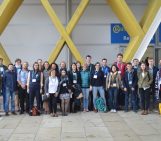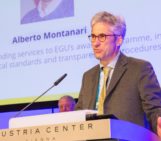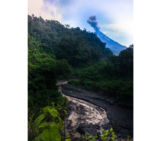
Hello Thanushika – welcome to GeoTalk! Before we delve deeper, could you introduce yourself to our readers?
Thank you for having me! I’m Thanushika Gunatilake, an Assistant Professor at Vrije Universiteit Amsterdam. My research connects natural and human-induced processes in the Earth’s crust; from earthquake nucleation in the central Apennines, subduction dynamics, and volcanic activity, to geothermal energy production and CO₂ storage, where fluid injections can trigger seismicity. By linking these systems, I aim to understand how fluid flow, pressure changes, and rock deformation interact, helping us use the subsurface more safely and sustainably.
How do earthquakes and volcanic activity affect energy systems, such as geothermal exploration or carbon dioxide sequestration?
For me, the connection is quite natural: the physics is always the same. Whether we talk about an active volcano, a subduction zone, or an engineered geothermal system, it all comes down to pressure changes in the subsurface. When fluids are injected, heated, or mobilised, they alter the stress field, which can trigger seismic events. I try to understand these pressure–stress interactions through physics-based numerical models, linking natural processes to engineered systems. This helps us learn from nature, where fluids and faults have interacted for millions of years, to design safer and more resilient energy systems today.
How can people get involved with ERE activities?
It’s easy: and we’d love to have you! You can attend ERE sessions at EGU or other conferences, talk to us during one of our events, or sign up for our newsletters to stay informed. You can also simply write us an email if you’re curious or want to help. We’re always happy to welcome new volunteers who are motivated to be part of the EGU ERE community, find collaborations, or bring in fresh ideas.




